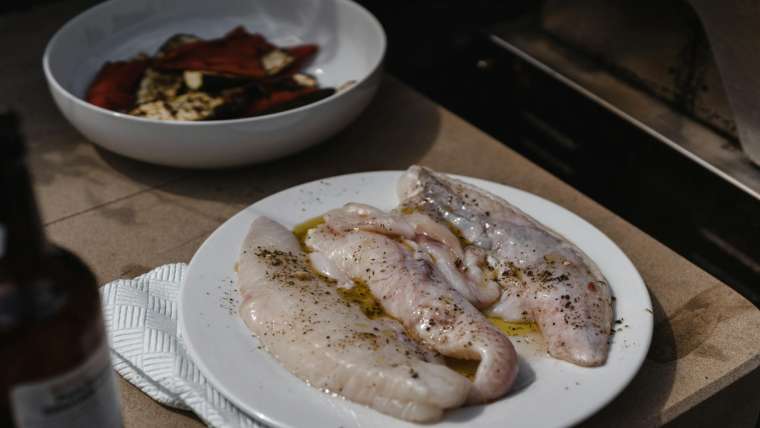Unlock the secrets of culinary delight with our ultimate guide that explores classic comfort foods and exotic eats from around the world.
Table of Contents
Welcome, young animal enthusiasts! Are you ready to embark on an exciting journey into the fascinating world of animals? Get ready to explore the incredible variety of wildlife, the amazing ways they survive and thrive, and the importance of protecting our animal friends. Let’s dive in and discover the wonders of the animal kingdom together!
The World of Animals
Animals come in all shapes and sizes, from towering elephants to tiny insects. This incredible variety of wildlife makes up the biodiversity of our planet, which means the different types of animals living together. These animals make their homes in various places known as ecosystems, like forests, oceans, and deserts.
What is Biodiversity?
Biodiversity is like having a big library full of different books. Each animal is like a unique story, and having many different kinds of animals is important because it keeps our planet healthy and thriving. It’s like having a world full of exciting adventures!
Home Sweet Home: Ecosystems
Imagine a lion prowling in the African savanna or a dolphin leaping in the deep blue sea. These animals have their special homes where they live, raise families, and find food. Each ecosystem has its own beauty and magic, making Earth a wondrous place for all creatures.
Getting By: Animal Behaviors
Did you know that some animals have an amazing superpower called camouflage? Camouflage is when an animal changes its color or shape to blend in with its surroundings, just like playing a game of hide and seek. This super cool ability helps animals stay safe from predators that might want to catch them for dinner. Imagine if we could change our clothes to match the color of the walls in our house – that’s how awesome camouflage is in the animal world!
On the Hunt: Finding Food
Just like you need to eat your fruits and veggies to stay healthy, animals also need to find food to survive. Some animals are great hunters, like lions that chase after their prey, or eagles that swoop down from the sky to catch a fish for dinner. Other animals, like squirrels, spend their time gathering nuts and seeds to munch on later. It’s fascinating to see how different animals have special ways to find food and make sure they have a full tummy.
Friends Forever: Animal Friendships
Animals can be amazing friends to each other, just like you and your best buddies. There are some special friendships in the animal kingdom that show us the power of teamwork and cooperation. Let’s explore how animals bond and help each other out.

Image courtesy of www.canva.com via Google Images
Teamwork in Nature
One of the coolest things about animals is how they team up to make life a little easier. Take bees and flowers, for example. Bees fly from flower to flower sipping nectar, and in the process, they help flowers reproduce by spreading pollen. It’s like a mutual agreement where both parties benefit. Flowers get to make seeds, and bees get yummy nectar – a win-win situation!
Similarly, oxpeckers and rhinos have a unique friendship. The little birds hitch a ride on the rhinos’ backs, eating ticks and insects that bother the big animals. The oxpeckers get a tasty snack, and the rhinos get pest control – another win-win! These partnerships in nature show us that by working together, animals can accomplish amazing things.
From Baby to Grownup: Animal Life Cycles
Have you ever wondered how some animals start as tiny babies and grow up to be big grownups? Let’s explore the incredible transformations that take place in the animal kingdom as creatures go from being adorable youngsters to fully mature individuals.
Incredible Transformations
One of the most fascinating things about the world of animals is metamorphosis. It’s like magic happening right before your eyes! Take, for example, the journey of a tadpole turning into a frog. A tadpole starts its life swimming in the water with a long tail and no legs. But as it grows, it slowly transforms into a hopping frog with powerful legs and no tail. Isn’t that amazing?
Many animals go through similar changes as they grow. Butterflies, for instance, go from being caterpillars munching on leaves to graceful fliers with colorful wings. The process of growing up and changing in appearance is a vital part of an animal’s life cycle. It helps them adapt to their surroundings and fulfill their roles in the ecosystem.
So, next time you see a little creature in the wild, remember that it might just be in the middle of an extraordinary transformation, gearing up to become a magnificent grownup in the animal world!
Animal Homes and Construction
Animals, just like humans, need a cozy place to call home. But did you know some animals are real builders and architects? Let’s explore the amazing world of animal homes and construction!

Image courtesy of grin.co via Google Images
Builders and Architects
When it comes to creating homes, animals have some impressive skills. Take birds, for example. Have you ever seen a bird’s nest up close? It’s like a tiny masterpiece made of twigs, leaves, and even bits of mud and feathers. Birds use their beaks to carefully construct these nests to protect their eggs and keep their babies safe and warm.
But birds aren’t the only ones with construction talent. Have you heard of burrowing animals like rabbits? These furry creatures dig tunnels underground to create burrows where they can sleep, hide from predators, and raise their babies. It’s like having their own cozy underground apartment!
Some animals even use materials you might not expect. Termites, tiny insects that live in big colonies, are fantastic architects. They work together to build towering mounds out of mud, saliva, and poop! It may sound yucky, but these mounds are sturdy homes that can stay standing for years.
So, the next time you see a bird’s nest or a rabbit burrow, remember the incredible builders and architects behind these cozy homes—our animal friends!
Animal Communication
In the animal kingdom, communication is a vital part of how creatures interact with each other. Just like how humans use language to talk to each other, animals have their own unique ways of communicating. Let’s dive into the fascinating world of animal chats!
Chats in Nature
Animals have different ways of talking to each other, and some don’t use words at all! They communicate through sounds, movements, or even colors. For example, birds chirp to attract a mate or to warn others of danger. Dolphins use clicks and whistles to communicate underwater, creating a language that only they understand.
| Cuisine Type | Classic Comfort Dishes | Exotic Eats |
|---|---|---|
| American | Macaroni and Cheese | BBQ Ribs |
| Italian | Spaghetti Bolognese | Osso Buco |
| Japanese | Sushi | Ramen |
| Indian | Butter Chicken | Paneer Tikka |
| Mexican | Tacos | Mole Poblano |
Have you ever heard a cat meowing loudly? That’s their way of saying they are hungry or lonely. Elephants use low-frequency rumbles that can travel long distances to call out to their herd members. Even bees dance to show their hive mates where to find nectar!
Some animals use their bodies to communicate. Chameleons change their color to blend in with their surroundings or to show their emotions. Peacocks display their colorful feathers to attract a mate. These vibrant displays are like nature’s own form of communication!
When the Seasons Change
Seasons change just like how we change clothes to match the weather. But have you ever wondered what animals do when the chilly winter rolls in or when the hot summer sun beams down? Let’s find out how our furry and feathered friends handle these seasonal shifts!

Image courtesy of www.shutterstock.com via Google Images
Nature’s Travelers and Sleepers
When the cold winds start to blow, some animals don’t stick around for the winter. Instead, they pack their bags, or should we say fluff up their feathers, and fly to warmer places. Birds like geese, hummingbirds, and even monarch butterflies embark on long journeys to escape the freezing temperatures. Imagine flying thousands of miles just to find a cozy spot where the sun shines bright!
Now, not all animals are keen on flying away. Some prefer a more slumberous approach to winter. Bears, squirrels, and even some frogs opt for hibernation. It’s like the ultimate nap time where they curl up and sleep through the cold months. When they wake up in spring, it’s like they hit the snooze button on winter!
So, while we get our cozy blankets and mugs of hot chocolate ready for the cold season, animals have their own unique ways of dealing with the change in seasons. Whether they’re fluttering off to warmer lands or tucking in for a long winter’s nap, nature sure has some amazing tricks up its sleeve!
Sharing Our Planet
When we talk about sharing our planet, we mean living harmoniously with all the amazing animals that call Earth their home. It’s important for us to understand why we should care about animals and how our actions can impact them.
Being Good Neighbors
Imagine if you had a special treehouse in the forest where you loved to play. Now, think about what would happen if someone started cutting down the trees around it. You wouldn’t want to lose your favorite spot, would you?
Just like us, animals have their own homes where they eat, sleep, and raise their families. However, sometimes humans unintentionally harm these homes by cutting down forests, polluting oceans, and causing other damages to the environment. This can put many animals in danger and even make some species disappear forever.
We can be good neighbors to these creatures by being mindful of our actions. Simple things like not littering, recycling, and using resources wisely can help protect animal homes and ensure they have a safe place to live.
Interactive Quiz
Hey there, animal enthusiasts! So, you’ve learned a lot about the amazing world of animals, their behaviors, friendships, homes, communication, and even how they adapt to changing seasons. Let’s put your knowledge to the test with an interactive quiz! Get ready to have some fun while recapping all the cool things you’ve discovered.

Image courtesy of otaokitchen.com.au via Google Images
Let’s Quiz Away!
1. What is biodiversity, and why is it important to have many different animal types?
2. How do animals use camouflage to stay safe in their habitats?
3. Can you name an example of a symbiotic animal friendship and explain how they help each other?
4. Describe the process of metamorphosis with an animal example.
5. Give an example of an animal home construction and how the animal makes it unique.
6. How do animals communicate with each other, and can you imitate a sound they make?
7. What do some animals do when the seasons change, and why?
8. Why is it important for us to protect and conserve animal habitats?
Once you’ve answered these questions, you’ll have a great recap of all the amazing things you’ve learned. And who knows, you might even discover some new facts along the way!
Conclusion
As we explored the incredible world of animals together, we discovered the amazing wildlife that graces our planet. From the vibrant biodiversity to the unique ecosystems where animals make their homes, there is so much to learn and appreciate.
We delved into the fascinating behaviors that help animals survive in their habitats, like the clever camouflage techniques and the strategies they use to find food. It’s truly awe-inspiring to see how these creatures adapt and thrive in their environments.
Our exploration of animal friendships and partnerships shed light on the wonderful symbiotic relationships that exist in nature. From bees and flowers working together to the mutual aid provided by different species, animals show the power of teamwork and cooperation.
Witnessing the miraculous transformations that animals undergo as they grow from babies to adults, like tadpoles evolving into frogs, reminds us of the magic and wonder present in the natural world. The intricate nests, burrows, and constructions that animals create to shelter themselves showcase their incredible architectural skills.
Communication plays a vital role in the animal kingdom, with creatures using various sounds, movements, and colors to interact with each other. Understanding their unique languages adds another layer of fascination to our exploration.
When the seasons change, animals display remarkable behaviors such as migration and hibernation to survive the winter months. Their instincts guide them on epic journeys or long naps as they adapt to the environmental shifts.
Finally, our journey through this article emphasizes the importance of sharing our planet with animals and taking steps to preserve their habitats. Each of us can make a difference by being good neighbors to these wonderful creatures and ensuring their well-being.
Before you go, remember to keep an eye out for wildlife in your own backyard and continue to learn about the incredible world of animals around us. Let’s cherish and protect these amazing creatures that make our planet so vibrant and diverse!
FAQs
What is the most important animal friendship?
One of the most remarkable animal friendships in nature is the relationship between bees and flowers. Bees help pollinate flowers, allowing them to reproduce and continue growing. In return, flowers provide nectar for bees to make honey. It’s a perfect example of teamwork and mutualism in the animal world!
How do animals know when to migrate or hibernate?
Animals have incredible instincts that help them know when it’s time to migrate or hibernate. For example, some birds can sense changes in daylight, temperature, and food availability, signaling them to fly to different locations for the seasons. Animals like bears prepare for hibernation by storing up food and finding a safe, cozy spot to snooze through the winter.
Why is it important to protect endangered species?
Protecting endangered species is vital because it helps maintain the balance of ecosystems. Every animal, no matter how small or big, plays a crucial role in nature. When a species becomes endangered or extinct, it can have a domino effect on other creatures and the environment. By taking care of endangered species, we are also ensuring the well-being of our planet and future generations.





